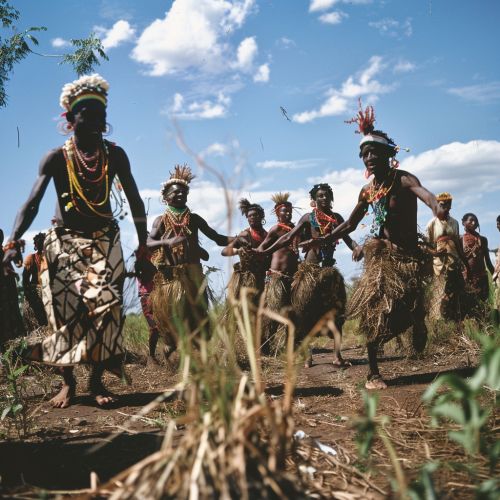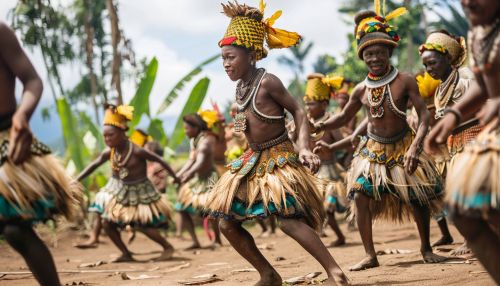The Keres
Introduction
The Keres, also known as the Keresan Puebloans, are a group of indigenous peoples in the Southwestern United States. They primarily reside in New Mexico and are known for their unique linguistic, cultural, and historical attributes. The Keres people are divided into several distinct communities, each with its own traditions and governance structures. This article delves into the intricate details of their society, language, history, and cultural practices.
History
The history of the Keres people is deeply intertwined with the broader history of the Puebloan peoples. Archaeological evidence suggests that the ancestors of the Keres have inhabited the region for thousands of years, with their presence dating back to the Ancestral Puebloans, also known as the Anasazi. The Keres have maintained a continuous presence in the region, adapting to various changes brought about by external influences, including Spanish colonization, Mexican governance, and American expansion.
Pre-Colonial Era
Before European contact, the Keres lived in well-organized communities with complex social structures. They engaged in agriculture, cultivating crops such as maize, beans, and squash, which were central to their diet and culture. The Keres also practiced hunting and gathering, supplementing their agricultural produce with wild game and native plants.
Spanish Colonization
The arrival of the Spanish in the 16th century marked a significant turning point for the Keres. The Spanish introduced new technologies, animals, and crops, but also imposed their religion and governance structures. The Keres resisted Spanish domination through various means, including the Pueblo Revolt of 1680, which temporarily expelled the Spanish from the region.
Mexican and American Periods
Following the Mexican War of Independence, the Keres came under Mexican rule, and later, after the Mexican-American War, they became part of the United States. Each transition brought new challenges and opportunities, with the Keres navigating changes in land ownership, legal status, and cultural preservation.
Language
The Keres language, or Keresan, is a linguistic isolate, meaning it has no known relation to any other language family. This unique status makes it a subject of significant interest among linguists. Keres is divided into seven dialects, corresponding to the seven Keres-speaking pueblos: Acoma, Cochiti, Kewa (formerly Santo Domingo), Laguna, San Felipe, Santa Ana, and Zia.
Linguistic Characteristics
Keresan is characterized by its complex phonology and morphology. It features a rich array of consonants and vowels, with distinctions in length and tone. The language employs agglutination, a process where words are formed by stringing together morphemes, each contributing a specific meaning.
Language Preservation
Efforts to preserve and revitalize the Keres language are ongoing. Community programs, educational initiatives, and collaborations with linguists aim to document and teach the language to younger generations. These efforts are crucial for maintaining the cultural heritage and identity of the Keres people.
Society and Culture
Keres society is organized around kinship and community, with a strong emphasis on collective responsibility and mutual support. Traditional governance structures, religious practices, and social norms play a vital role in maintaining social cohesion.
Governance
Each Keres pueblo operates as an autonomous entity with its own tribal council and leadership. Governance is typically based on traditional practices, with leaders chosen through community consensus or hereditary systems. The councils oversee various aspects of community life, including land management, dispute resolution, and cultural preservation.
Religious and Ceremonial Life
Religion and spirituality are central to Keres culture. The Keres practice a blend of traditional beliefs and Catholicism, a legacy of Spanish colonization. Ceremonies and rituals are conducted throughout the year, marking important agricultural cycles, life events, and communal gatherings. These ceremonies often involve intricate dances, songs, and the use of sacred objects.


Art and Craftsmanship
Keres artisans are renowned for their pottery, weaving, and jewelry. Traditional Keres pottery is characterized by its intricate designs and functional forms, often used in both everyday life and ceremonial contexts. Weaving and jewelry-making also hold significant cultural importance, with techniques and patterns passed down through generations.
Economy
The traditional Keres economy was based on agriculture, hunting, and trade. In contemporary times, the Keres have diversified their economic activities, integrating modern practices while maintaining traditional ones.
Agriculture
Agriculture remains a cornerstone of the Keres economy. The cultivation of maize, beans, and squash continues, with traditional farming methods being supplemented by modern techniques. Community gardens and cooperative farming initiatives are common, promoting food security and sustainability.
Trade and Commerce
Historically, the Keres engaged in extensive trade networks with neighboring tribes and Spanish settlers. Today, they participate in the broader economy through various enterprises, including arts and crafts sales, tourism, and small businesses. Some Keres pueblos have also developed gaming and hospitality industries, providing significant economic benefits to their communities.
Challenges and Contemporary Issues
The Keres, like many indigenous communities, face numerous challenges in the modern era. These include issues related to land rights, cultural preservation, and socio-economic disparities.
Land Rights
Land is a critical aspect of Keres identity and livelihood. Historical land dispossession and contemporary land use conflicts pose ongoing challenges. Efforts to reclaim and protect ancestral lands are a significant focus for Keres leadership and advocacy groups.
Cultural Preservation
Maintaining cultural heritage in the face of globalization and assimilation pressures is a major concern. Language revitalization, traditional practices, and intergenerational knowledge transfer are key areas of focus for cultural preservation initiatives.
Socio-Economic Disparities
Many Keres communities experience socio-economic disparities, including limited access to healthcare, education, and employment opportunities. Addressing these disparities requires a multifaceted approach, involving community-driven solutions, policy advocacy, and partnerships with external organizations.
See Also
- Puebloan Peoples
- Ancestral Puebloans
- Pueblo Revolt
- Indigenous Languages of the Americas
- Native American Art
